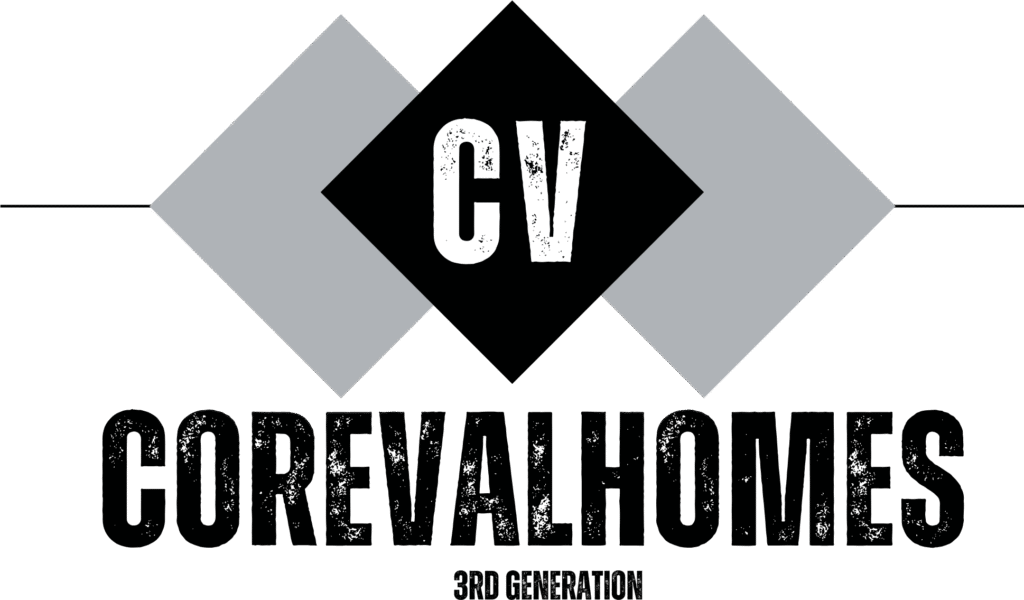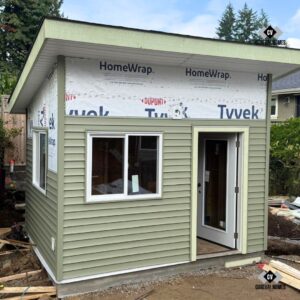Vancouver is at a critical juncture in its housing market, especially for Vancouver builders focusing on the “missing middle” — that elusive segment of gentle density housing typologies including multiplexes, townhomes, and low-rise apartments that are crucial for addressing the city’s chronic housing shortage. Despite policy shifts intending to unlock this critical housing stock, actual construction remains stubbornly lagging.
As an experienced Vancouver builder, CoreVal Homes delves beneath the surface hype to expose the real economic and regulatory friction points making missing middle projects financially untenable. Understanding these barriers is essential for anyone in the development or investment sphere aiming to navigate Vancouver’s complex housing landscape.
The Land-Use Economics Trap: Why Vancouver’s Land Costs Cripple Gentle Density Development
At its core, the challenge boils down to residual land value misalignment. Simply put, after accounting for construction and soft costs plus developer returns, what remains as residual land value must be enough to bid competitively on parcels of land. In Vancouver, restrictive single-family zoning has historically skewed land prices toward high-end custom home valuations, inflating lot costs to levels unsupportable by multi-unit gentle density projects.
A recent Canadian Mortgage and Housing Corporation (CMHC) report reveals that between 2018 and 2024, new missing middle housing starts in Vancouver plummeted by 56%. In 2018, there were 2,300 starts, falling as low as 929 in 2020 during the pandemic, with a projected 1,572 starts in 2025—a partial recovery but still far below demand.
This substantial decline confirms that the land-use economics trap is a primary barrier. The high initial capital outlay required to secure land based on single-family home speculation prices dwarfs what a four-plex, six-plex, or rowhouse project can sustain financially. Without targeted policy interventions or financial incentives, small-scale multi-unit housing (SSMUH) will remain economically fragile in Vancouver.
The Regulatory Pipeline: Time Is Money — A Costly Bottleneck
Beyond land acquisition, the regulatory pipeline adds significant financial risk. Time is a developer’s enemy when navigating Vancouver’s complex multifaceted permitting process. Each month of delay triggers escalating holding costs, financing fees, and risk premiums that ultimately inflate prices or deter projects altogether.
Policy intentions since 2024 aimed to establish an “as-of-right” framework, allowing ministerial approval for projects strictly meeting zoning envelopes to reduce permitting delays. However, practical implementation remains slow and opaque, forcing many builders into prolonged multi-stage municipal approvals with unpredictable timelines.
This slow regulatory cadence contrasts sharply with cities like Calgary and Edmonton, where streamlined processes have spurred a surge in missing middle developments. Speed and certainty in permitting are essential non-monetary levers for reducing financial risk and encouraging market participation.
Strategic Solutions to Accelerate Vancouver’s Missing Middle Housing Supply

CoreVal Homes advocates a triad of focused, market-aligned reforms to clear these bottlenecks and ignite supply:
- Enforce Rigid Ministerial Approval Timeframes: Implement strict mandatory timelines for as-of-right project approvals, ensuring certainty and reducing protracted financial exposure.
- Financial De-risking Mechanisms: Offer targeted incentives such as reduced Development Cost Charges (DCCs) or density bonuses for SSMUH projects deliverable at affordable or rental tenure price points—helping bridge the economics gap.
- Transparency and Data-Driven Certainty: Publicize comprehensive data on average time-to-permit across housing typologies. This empowers developers to price risk accurately, stabilizing pro forma projections.
Vancouver Housing Market Trends: Data-Backed Insights for Builders
- Condominium apartment starts declined sharply by 13.4% in the first half of 2025, reflecting high costs and cautious pre-sales, pushing developers towards smaller projects or cancellations.
- Active home listings in the resale market have increased year-over-year, but sales have dampened due to economic uncertainty, slightly easing market tightness.
- Overall new home sales have plunged by about 50% in Vancouver from 2021 levels, with CMHC forecasting further declines in starts into 2027 without intervention, risking a severe employment downturn in construction-related sectors.
These data points underpin why innovation, policy reform, and strategic financial tools are necessary for builders to succeed in Vancouver’s evolving environment.
Why Choose CoreVal Homes as Your Vancouver Builder?
With rigorous daily development pro forma analysis and a clear-eyed understanding of economic and regulatory challenges, CoreVal Homes is uniquely positioned to lead projects that navigate the missing middle’s complexity. Our commitment to quality, efficiency, and compliance has helped clients transition from concept to built reality in Vancouver’s toughest conditions.
Ready to bring your gentle density vision to life in Vancouver? Visit www.corevalhomes.com to explore our projects and expert insights. Contact CoreVal Homes today to discuss how we can help you overcome financial and regulatory barriers and build the sustainable, affordable housing Vancouver so urgently needs.
FAQs
1. How can Vancouver builders leverage new zoning laws to accelerate missing middle housing development?
Vancouver builders can utilize recently enacted zoning reforms like the Residential Inclusive R1-1 Zone, which simplifies approval processes and broadens housing types, enabling faster project realization and reducing regulatory delays. Engaging proactively with city planning initiatives is essential for maximizing these zoning benefits.
2. What innovative financing options are available for developers working on missing middle projects in Vancouver?
Developers can explore targeted financial incentives such as density bonusing, reduced development cost charges, and government grants aimed at affordable housing initiatives, all designed to mitigate high land costs and soft costs associated with density projects.
3. How does the current Vancouver infrastructure impact missing middle housing feasibility?
The existing infrastructure, including transportation and utility networks, plays a substantial role in project viability. Improvements aligned with city plans like the Vancouver Plan can facilitate smoother development processes and reduce costs, unlocking potential for more multi-family, ground-oriented housing.
4. Are laneway houses a feasible option for Vancouver builders aiming for incremental density?
Yes, laneway houses have become increasingly viable following recent regulatory relaxations, providing an efficient way to add density incrementally while maintaining neighborhood character. Consult with specialized Vancouver design-build firms to navigate specific zoning and permitting requirements.
5. What are the key market trends influencing the demand for missing middle housing in Vancouver?
Demand is driven by affordability constraints, shifting family preferences for ground-oriented homes, and urban demographic changes—especially among young families and downsizing seniors. Market data suggests a growing appetite for flexible, low-maintenance multi-unit options with easy transit access.
People Also Ask
1. Why is Vancouver’s missing middle housing essential for its long-term urban sustainability?
Missing middle housing provides diverse, affordable options that support population growth without overburdening infrastructure, contributing to compact, sustainable urban forms that minimize environmental impact while addressing housing shortages.
2. What are the main barriers to expanding missing middle housing in Vancouver?
The primary barriers include high land costs driven by restrictive zoning, lengthy permitting processes, and soft costs inflation, all of which inhibit scalable development consistent with city growth goals.
3. How does the Vancouver Plan affect the future of missing middle housing?
The Vancouver Plan emphasizes increased density in appropriate areas, including supporting policies for ground-oriented multi-unit housing, which will likely streamline approvals and incentivize more inclusive, density-friendly development.
4. Can current construction labor shortages impact the pace of missing middle housing projects?
Absolutely. Skilled labor shortages combined with high construction costs slow down project timelines and inflate costs, further complicating efforts to jam new small-scale multi-family units into existing neighborhoods.
5. How does Vancouver compare to other Canadian cities in missing middle housing development?
While Vancouver faces significant hurdles, cities like Calgary and Edmonton have achieved higher development volumes due to more streamlined approval processes and lower land costs, offering models for potential policy reforms and market stimulation









